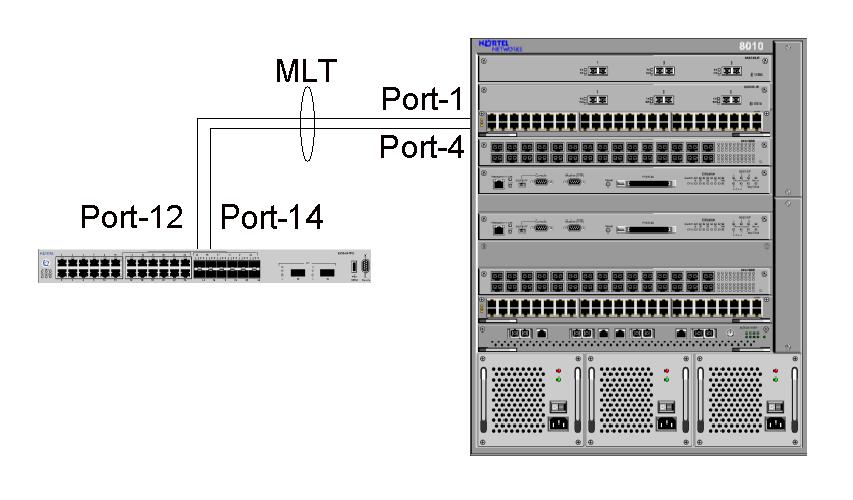|
First-hop Redundancy Protocols
A first hop redundancy protocol (FHRP) is a computer networking protocol which is designed to protect the default gateway used on a subnetwork by allowing two or more router (computing), routers to provide backup for that address; in the event of failure of an active router, the backup router will take over the address, usually within a few seconds. In practice, such protocols can also be used to protect other services operating on a single IP address, not just routers. Examples of such protocols include (in approximate order of creation): * Hot Standby Router Protocol (HSRP) - Cisco's initial, proprietary standard developed in 1998 * Virtual Router Redundancy Protocol (VRRP) - an open (albeit patent encumbered) standard protocol * Common Address Redundancy Protocol (CARP) - patent-free unencumbered alternative to Cisco's HSRP developed in October 2003 * Extreme Standby Router Protocol (ESRP) - Extreme Networks' proprietary standard with fast failover and also layer 2 protection * ... [...More Info...] [...Related Items...] OR: [Wikipedia] [Google] [Baidu] |
Computer Networking
A computer network is a set of computers sharing resources located on or provided by network nodes. The computers use common communication protocols over digital interconnections to communicate with each other. These interconnections are made up of telecommunication network technologies, based on physically wired, optical, and wireless radio-frequency methods that may be arranged in a variety of network topologies. The nodes of a computer network can include personal computers, servers, networking hardware, or other specialised or general-purpose hosts. They are identified by network addresses, and may have hostnames. Hostnames serve as memorable labels for the nodes, rarely changed after initial assignment. Network addresses serve for locating and identifying the nodes by communication protocols such as the Internet Protocol. Computer networks may be classified by many criteria, including the transmission medium used to carry signals, bandwidth, communications protocols ... [...More Info...] [...Related Items...] OR: [Wikipedia] [Google] [Baidu] |
Gateway Load Balancing Protocol
Gateway Load Balancing Protocol (GLBP) is a Cisco proprietary protocol that attempts to overcome the limitations of existing redundant router protocols by adding basic load balancing functionality. In addition to being able to set priorities on different gateway routers, GLBP allows a weighting parameter to be set. Based on this weighting (compared to others in the same virtual router group), ARP requests will be answered with MAC addresses pointing to different routers. Thus, by default, load balancing is not based on traffic load, but rather on the number of hosts that will use each gateway router. By default, GLBP load balances in round-robin fashion. GLBP elects one AVG (Active Virtual Gateway) for each group. Other group members act as backup in case of AVG failure. In case there are more than two members, the second best AVG is placed in the Standby state and all other members are placed in the Listening state. This is monitored using hello and holdtime timers, which are 3 ... [...More Info...] [...Related Items...] OR: [Wikipedia] [Google] [Baidu] |
Mellanox
Mellanox Technologies Ltd. ( he, מלאנוקס טכנולוגיות בע"מ) was an Israeli-American multinational supplier of computer networking products based on InfiniBand and Ethernet technology. Mellanox offered adapters, switches, software, cables and silicon for markets including high-performance computing, data centers, cloud computing, computer data storage and financial services. On March 11, 2019, Nvidia announced its intent to acquire the company for $6.9 billion. Other companies willing to acquire Mellanox were Intel, Xilinx and Microsoft. The deal closed on April 27, 2020, with approval from the EU, U.S. and Chinese antitrust authorities. The company was integrated into Nvidia's networking division in 2020 and Nvidia stopped using the brand name "Mellanox" for its new networking products. History 1999–2009 Mellanox was founded in May 1999 by former Israeli executives of Intel Corporation and Galileo Technology (which was acquired by Marvell Technology Group ... [...More Info...] [...Related Items...] OR: [Wikipedia] [Google] [Baidu] |
Chassis Cluster Redundant Ethernet
A chassis (, ; plural ''chassis'' from French châssis ) is the load-bearing framework of an artificial object, which structurally supports the object in its construction and function. An example of a chassis is a vehicle frame, the underpart of a motor vehicle, on which the body is mounted; if the running gear such as wheels and transmission, and sometimes even the driver's seat, are included, then the assembly is described as a rolling chassis. Examples of use Vehicles In the case of vehicles, the term ''rolling chassis'' means the frame plus the "running gear" like engine, transmission, drive shaft, differential and suspension. An underbody (sometimes referred to as "coachwork"), which is usually not necessary for integrity of the structure, is built on the chassis to complete the vehicle. For commercial vehicles, a rolling chassis consists of an assembly of all the essential parts of a truck without the body to be ready for operation on the road. A car chassis will b ... [...More Info...] [...Related Items...] OR: [Wikipedia] [Google] [Baidu] |
Juniper Networks
Juniper Networks, Inc. is an American multinational corporation headquartered in Sunnyvale, California. The company develops and markets networking products, including routers, switches, network management software, network security products, and software-defined networking technology. The company was founded in 1996 by Pradeep Sindhu, with Scott Kriens as the first CEO, who remained until September 2008. Kriens has been credited with much of Juniper's early market success. It received several rounds of funding from venture capitalists and telecommunications companies before going public in 1999. Juniper grew to $673 million in annual revenues by 2000. By 2001 it had a 37% share of the core routers market, challenging Cisco's once-dominant market-share. It grew to $4 billion in revenues by 2004 and $4.63 billion in 2014. Juniper appointed Kevin Johnson as CEO in 2008, Shaygan Kheradpir in 2013 and Rami Rahim in 2014. Juniper Networks originally focused on core routers, whic ... [...More Info...] [...Related Items...] OR: [Wikipedia] [Google] [Baidu] |
NetScreen Redundancy Protocol
NetScreen Technologies was an American technology company that was acquired by Juniper Networks for US$4 billion stock for stock in 2004. NetScreen Technologies developed ASIC-based Internet security systems and appliances that delivered high performance firewall, VPN and traffic shaping functionality to Internet data centers, e-business sites, broadband service providers and application service providers. NetScreen was the first firewall manufacturer to develop a gigabit-speed firewall, the NetScreen-1000. History NetScreen Technologies was founded by Yan Ke, Ken Xie, and Feng Deng. Ken Xie, Chief Technology Officer and co-founder was also the CEO until Robert Thomas joined in 1998. Robert Thomas, NetScreen's president and chief executive officer, came to NetScreen in 1998 from Sun Microsystems, where he was General Manager of Intercontinental Operations for Sun's software business, which includes security, networking, and Internet tools. Ken Xie left NetScreen in 2000 to found ... [...More Info...] [...Related Items...] OR: [Wikipedia] [Google] [Baidu] |
Avaya
Avaya Holdings Corp., often shortened to Avaya (), is an American multinational technology company headquartered in Durham, North Carolina, that provides cloud communications and workstream collaboration services. The company's platform includes unified communications (UCaaS), contact center other services. The company provides services to 220,000 customer locations in 190 countries. History In 1995, Lucent Technologies was spun off from AT&T, and Lucent subsequently spun off units of its own in an attempt to restructure its struggling operations. .html" ;"title="/sup>">/sup> Avaya was then spun off from Lucent as its own company in 2000 (Lucent merged with Alcatel SA in 2006, becoming Alcatel-Lucent, which was purchased in turn by Nokia in 2016). It remained a public company from 2000 to 2007. In October 2007, Avaya was acquired by two private-equity firms, TPG Capital and Silver Lake Partners, for $8.2 billion. On January 19, 2017, Avaya filed for Chapter 11 bankruptcy. ... [...More Info...] [...Related Items...] OR: [Wikipedia] [Google] [Baidu] |
RSMLT
Multi-link trunking (MLT) is a link aggregation technology developed at Nortel in 1999. It allows grouping several physical Ethernet links into one logical Ethernet link to provide fault-tolerance and high-speed links between routers, switches, and servers. MLT allows the use of several links (from 2 up to 8) and combines them to create a single fault-tolerant link with increased bandwidth. This produces server-to-switch or switch-to-switch connections that are up to 8 times faster. Prior to MLT and other aggregation techniques, parallel links were underutilized due to Spanning Tree Protocol’s loop protection. Fault-tolerant design is an important aspect of Multi-Link Trunking technology. Should any one or more than one link fail, the MLT technology will automatically redistribute traffic across the remaining links. This automatic redistribution is accomplished in less than half a second (typically less than 100 millisecond) so no outage is noticed by end users. This high speed ... [...More Info...] [...Related Items...] OR: [Wikipedia] [Google] [Baidu] |
Load Balancing (computing)
In computing, load balancing is the process of distributing a set of tasks over a set of resources (computing units), with the aim of making their overall processing more efficient. Load balancing can optimize the response time and avoid unevenly overloading some compute nodes while other compute nodes are left idle. Load balancing is the subject of research in the field of parallel computers. Two main approaches exist: static algorithms, which do not take into account the state of the different machines, and dynamic algorithms, which are usually more general and more efficient but require exchanges of information between the different computing units, at the risk of a loss of efficiency. Problem overview A load-balancing algorithm always tries to answer a specific problem. Among other things, the nature of the tasks, the algorithmic complexity, the hardware architecture on which the algorithms will run as well as required error tolerance, must be taken into account. Therefore c ... [...More Info...] [...Related Items...] OR: [Wikipedia] [Google] [Baidu] |
Layer 2
The data link layer, or layer 2, is the second layer of the seven-layer OSI model of computer networking. This layer is the protocol layer that transfers data between nodes on a network segment across the physical layer. The data link layer provides the functional and procedural means to transfer data between network entities and may also provide the means to detect and possibly correct errors that can occur in the physical layer. The data link layer is concerned with local delivery of frames between nodes on the same level of the network. Data-link frames, as these protocol data units are called, do not cross the boundaries of a local area network. Inter-network routing and global addressing are higher-layer functions, allowing data-link protocols to focus on local delivery, addressing, and media arbitration. In this way, the data link layer is analogous to a neighborhood traffic cop; it endeavors to arbitrate between parties contending for access to a medium, without conc ... [...More Info...] [...Related Items...] OR: [Wikipedia] [Google] [Baidu] |
Default Gateway
A default gateway is the node in a computer network using the Internet protocol suite that serves as the forwarding host ( router) to other networks when no other route specification matches the destination IP address of a packet. Role A gateway is a network node that serves as an access point to another network, often involving not only a change of addressing, but also a different networking technology. More narrowly defined, a router merely forwards packets between networks with different network prefixes. The networking software stack of each computer contains a routing table that specifies which interface is used for transmission and which router on the network is responsible for forwarding to a specific set of addresses. If none of these forwarding rules is appropriate for a given destination address, the default gateway is chosen as the router of last resort. The default gateway can be specified by the route command to configure the node's routing table and default route. In ... [...More Info...] [...Related Items...] OR: [Wikipedia] [Google] [Baidu] |





